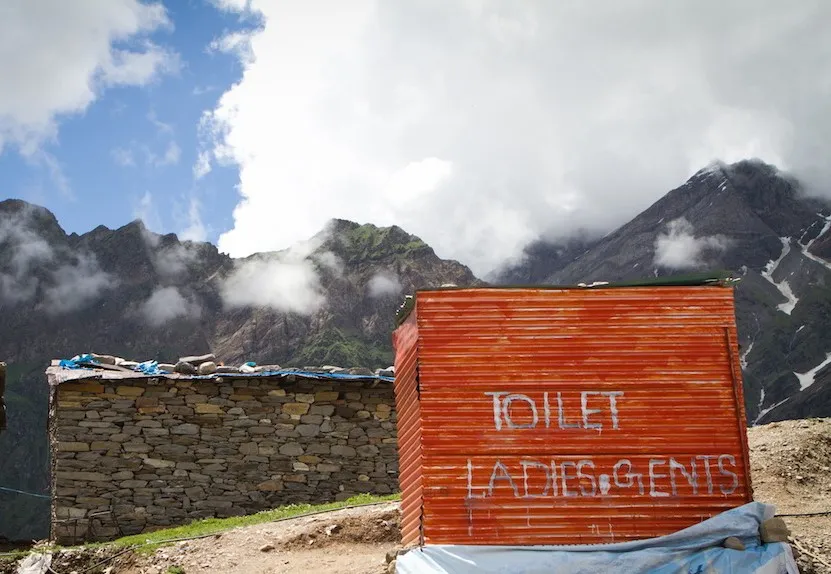
Government machinery and non-governmental players have been working relentlessly since the launch of Swachh Bharat Mission (SBM) to make India completely Open Defecation-free (ODF) by October 2019. The focus on rural sanitation has indeed resulted in positive action. According to the Swachh Bharat Mission Gramin’s (SBM-G) website, 473,331 villages, 472 districts and 22 states have achieved the ODF status (as on 26 September 2018)
<1>. However, there have been multiple instances where the ODF status has been questioned. Most significant of these questions came from the Comptroller and Auditor General (CAG) of India on 19 September 2018 when a report was tabled in Gujarat assembly. The report debunks the state government’s claim of its ODF status.
Gujarat’s case according to the CAG report
Gujarat government had declared all the districts in the state ODF by 2 October 2017. However, the CAG report states that in 120 test-checked Gram Panchayats (GPs) under eight selected
District Panchayats for the period 2014-17, out of 54,008 households, 15,728 households still did not have any access to toilets — amounting to 29 percent of total households. The ODF status declaration was done on the basis of a baseline survey conducted in 2012 by the Panchayats, Rural Housing and Rural Development Department. However, the report also notes that this list was not updated after 2012 and therefore, a number of households which were not covered under the baseline survey and those that had no access to toilets were not factored in at the time of making the ODF announcement.
In Kaprada block (Valsad district), only 223 of 17,646 toilets constructed with financial assistance under the Total Sanitation Campaign/Nirmal Bharat Abhiyan were newly constructed under SBM while the remaining 17,423 toilets were wither in a state of neglect or were no longer in a usable condition. The Assistant Commissioner, SBM-G, Gandhinagar, stated that 2,529 of these defunct toilets had been newly constructed and put to use as of March 2018, while the process of construction of remaining defunct toilets was under progress. The CAG report finds this reply not tenable as a significant number of households were either without toilets or not able to use it for various reasons.
ODF status and evaluation parameters
SBM-G guidelines define ODF status as “the termination of faecal-oral transmission, that is, no visible faeces found in the environment, village, every household as well as public/community institutions using safe technology options for disposal of faeces.”
While there is mention of using safe technology, the focus in terms of setting targets and evaluation parameters should be on the termination of faecal-oral transmission and absence of visible faeces in the environment. In this view, ODF status should not be awarded to any village, district or state on the basis of the number of toilets constructed, especially given that the baseline data is generally found to be faulty and inadequate. Overemphasis on toilet construction has been criticised for long and that is often considered one of the major reasons why most of India’s national policies on sanitation have not seen much success.
Making villages ODF in India is a complicated affair. With many religious, cultural and caste-based reasons to it, Indians are averse to the foul smell, appearance and even verbal mention of faeces. Indians also prefer using water after defaecation and pour-flush toilets which cannot be constructed without ensuring adequate water supply. These factors limit the toilet technology that can be used and, therefore, many shortcomings of the SBM-prescribed toilets surface. People often don’t prefer to use these toilets not only limiting the number of toilets constructed but also rendering many toilets unused. As the CAG report mentions, in 41 of 120 test-checked GPs, household water connections were not available and, therefore, toilets constructed under SBM remained unused. In 15 villages, toilets were not being used either due to non-availability of water and soak pits, or incomplete construction.
While ODF claims by governments, urban local bodies (ULBs) and Panchayati Raj Institutions (PRIs) seem fundamentally flawed, it is necessary to investigate the truth behind them. Out of the various reasons that may exist, one of the most important is political mileage. In the initial days of SBM, ODF status served as an incentive for political leaders to motivate people in their constituency to construct household toilets. While this saw success in some districts like Indore, it also proved to be a major barrier to the uptake of toilet construction at many other places. For instance, in a village in Gujarat, the opposition leader
discouraged his supporters from constructing toilets so that the village wouldn’t be awarded the ODF status during the in-power Sarpanch’s tenure. ODF status has become tantamount to political accomplishments, which is visible at the state and national levels too — current government is evidently advertising the achievements of SBM, albeit without substantial and credible evidence.
Behaviour change
After much hue and cry from sanitation experts about how sanitation behaviour change is more important than toilet construction, SBM-G, to its credit, gave more attention to changing mind-sets than any of its predecessors — in terms of focus as well as budgetary provisions. Although it may still not seem sufficient, behaviour change did become one of the better considered components under SBM. Arguably, behaviour change may be the only solution to India’s open defecation problems. Despite this, complete absence of behavioural indicators from SBM evaluations and/or audits is not only baffling, but it also undermines the credibility of ODF status. Understandably, behaviour change is not quantifiable making it difficult to evaluate. However, many proxy-indicators to track behaviour change processes and outcomes can be put in place, which would fetch a more truthful picture of SBM’s progress.
In view of this and adhering to the definition of ODF, inclusion of behavioural, health, economic and toilet usage indicators to evaluate ODF status will be more fool-proof than considering only the number of toilets constructed.
ODF status: Gain or loss?
While ODF status on paper is an achievement, premature ODF status declaration has its own set of adverse consequences. After ODF declaration, the financial subsidies under SBM are not available anymore even for the eligible families and, therefore, the funds need to be routed through other schemes. Many beneficiaries in areas declared ODF on paper, thus cannot get the financial subsidies under SBM. According to the qualitative data collected in June-July 2017 in Mangrol Block of Junagadh district, about 3,000 households lacked access to toilets and the block had been declared ODF much before that. The potential beneficiaries couldn’t get funds for constructing toilets and they were so poor that they couldn’t construct toilets without financial assistance. While the government maintains that CSR funds fill this gap, anecdotal evidence says that the target is far from being achieved. Also, CSR funds are not concentrated and are not directly under government control, making them only a probable solution that may not always be reliable.
Conclusion
Although the ODF statuses give the governments a lot to boast, the reality seems much different. This reality can be observed all across India — from the Mumbai local trains, during a drive through the coastal villages of Gujarat, and in hinterland Maharashtra and at many such places. Unfortunately, lofty government’s claims through fancy advertisements, boastful political speeches, social media and official websites paint an incorrect picture that might do more harm to the cause of the SBM in the long-run. The CAG report in Gujarat has validated common observations, and this is certainly not an isolated case.
Dr. Sumedh is a medical doctor and a public health professional specialising in health promotion. He is an MBBS from Maharashtra University of Health Sciences and Masters in Public Health from London School of Hygiene and Tropical Medicine.
<1> https://sbm.gov.in/sbmdashboard/Default.aspx
The views expressed above belong to the author(s). ORF research and analyses now available on Telegram! Click here to access our curated content — blogs, longforms and interviews.



 Government machinery and non-governmental players have been working relentlessly since the launch of Swachh Bharat Mission (SBM) to make India completely Open Defecation-free (ODF) by October 2019. The focus on rural sanitation has indeed resulted in positive action. According to the Swachh Bharat Mission Gramin’s (SBM-G) website, 473,331 villages, 472 districts and 22 states have achieved the ODF status (as on 26 September 2018)
Government machinery and non-governmental players have been working relentlessly since the launch of Swachh Bharat Mission (SBM) to make India completely Open Defecation-free (ODF) by October 2019. The focus on rural sanitation has indeed resulted in positive action. According to the Swachh Bharat Mission Gramin’s (SBM-G) website, 473,331 villages, 472 districts and 22 states have achieved the ODF status (as on 26 September 2018)  PREV
PREV


